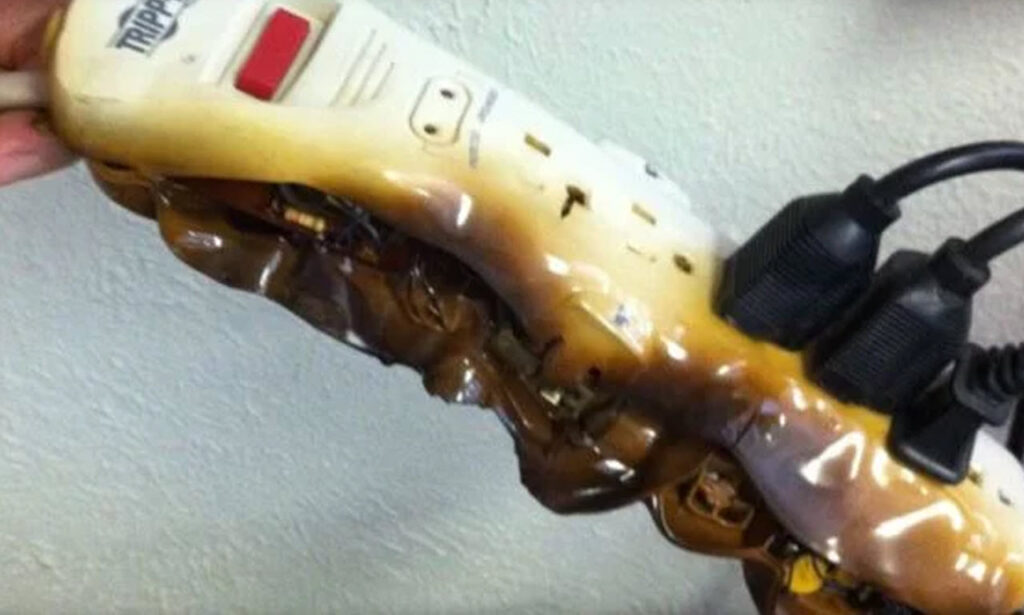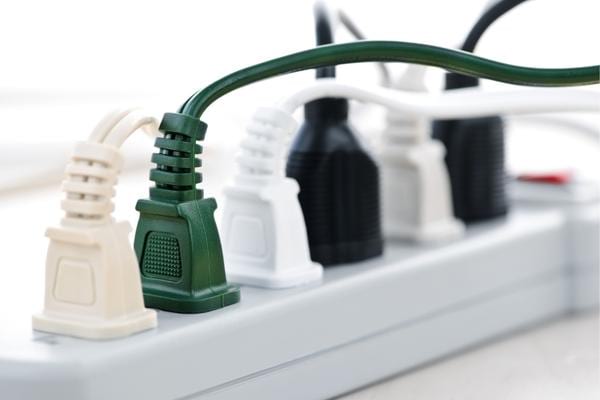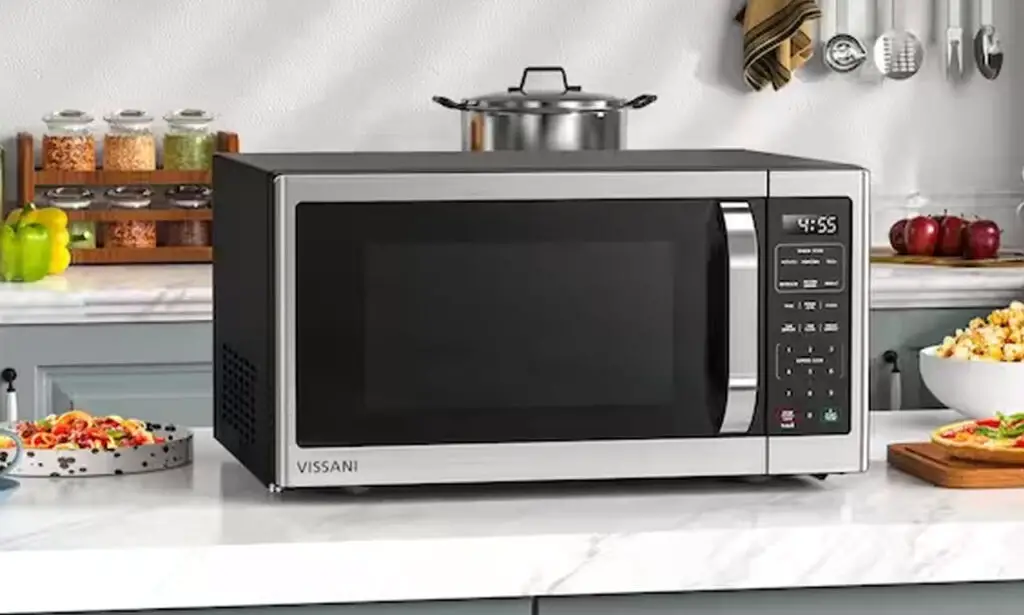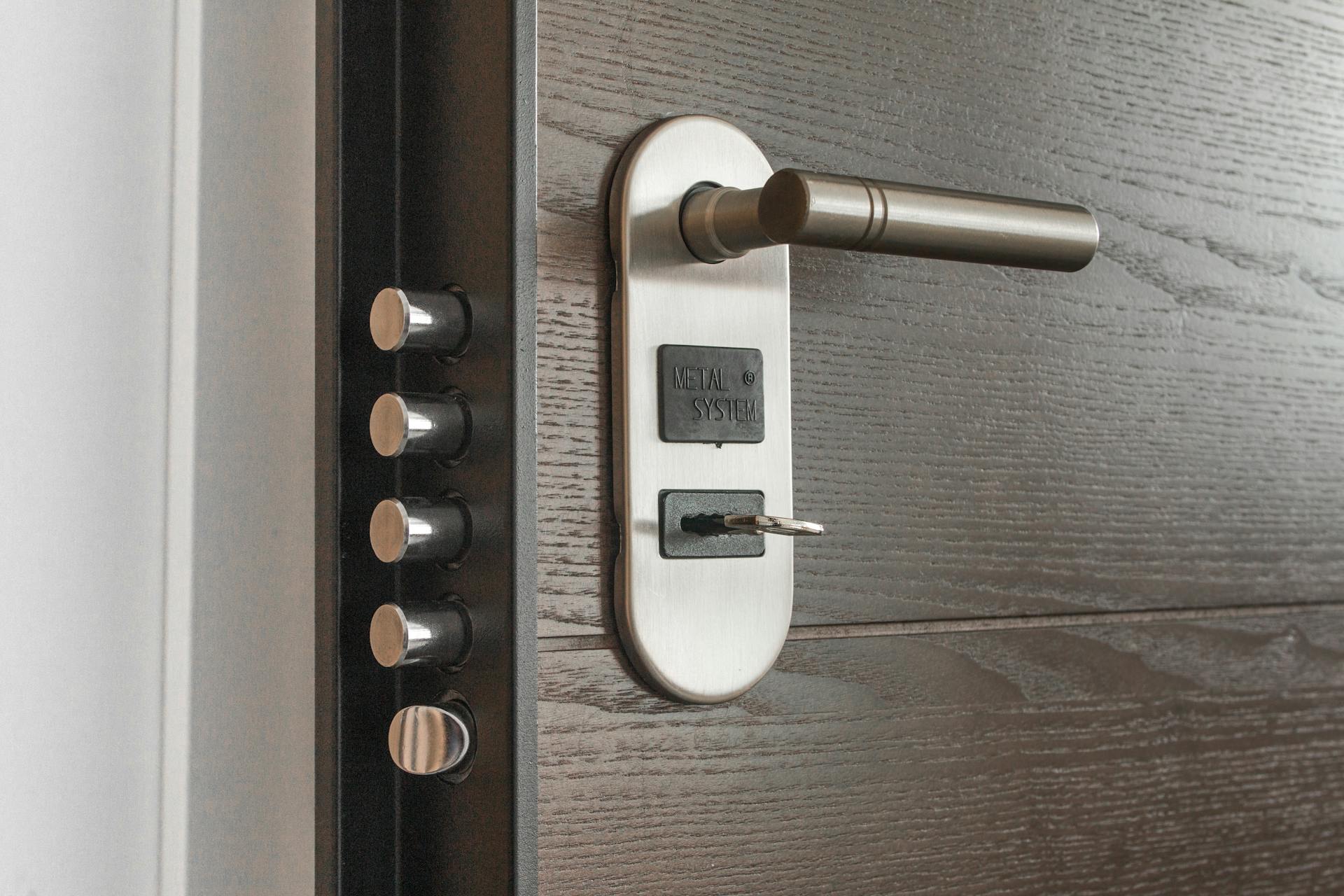
When we think of the past, one of the first thoughts that runs through our mind is how people lived without electricity. Nowadays, we can’t even imagine a day without it because all of our appliances and devices run on electricity.
The truth is, however, that most homes don’t have enough power outlets to keep everything running and charged, so most of us rely on power strips without being aware that appliances that consume a lot of energy become dangerous fire hazards when we plug them into a power strip.
Although power strips are the thing to go to when it comes to charging your phone or power an entertainment setup, there are certain devices that should never be plugged into a power strip.
Air conditioners, space heaters, toasters, and other appliances that use high wattage can easily cause power strips to overheat, which can easily lead to a fire hazard.

Even before plugging anything into a power strip consider the ammount of power they support. This is usually listed on the product itself.
High-capacity appliances need to draw a lot of power through an electrical circuit to work. Keep in mind that an appliance does not need to be large in size to draw large amounts of power.
Below is the list of appliances that should never be plugged into a power strip.
1. The oven: Even though the oven is not used continually, it is a power-hungry appliance that should not be plugged into a power strip. In fact, it should be plugged into its own wall outlet on its own circuit.
2. Refrigerator: Refrigerators require a lot of power and frequently cycle on and off which can easily overload a power strip and cause damage. Much like the oven, refrigerators require a wall outlet dedicated solely to powering the appliance.

3. Washing Machine: When turned on, washing machines pull a lot of power. This is the main reason why these appliances shouldn’t share a receptacle with any other appliance or device.
Most washing machines use a max of up to 1400 watts, putting it dangerously close to the max load of most power strips. On top of that while working, washing machines are usually left unattended and work longer hours, at least an hour, which is long enough for a power strip to overheat.
4. Heating: Portable heaters should never be plugged into a power strip because most of them use 1,500 watts of energy on their high setting and they usually run for extended periods of time.

5. Microwave: Since they consume a lot of energy when used, most microwave ovens are plugged into their own receptacle and that is always a good practice.
6. Coffee Maker: Those who own a coffee maker are not fully aware of the power these appliances use, and this is why they should never be plugged into any sort of power strip or extension cord.

7. Toaster: You may think that browning up slices of bread or bagels doesn’t require a lot of energy, but the truth is that toasters use a lot of energy when in use and they should be plugged directly into the receptacle rather than a power strip.
8. Another Power Strip: Power strips are not meant to be used in conjunction with another power strip, although many people do exactly that. This, however, violates most safety codes because it can easily lead to overloading the electrical system.
9. Electronics (Computer, TV, Router): These types of electronic devices don’t necessarily use a lot of power on their own, but they are sensitive to surges and you can find yourself with a burnt out computer or TV very quickly if you plug them into a power strip.
If you want to protect these sensitive devices from power surges, opt for a power strip that functions as a surge protector.
Atendi acidentalmente a ligação de trabalho do meu marido — a voz do outro lado da linha expôs sua vida dupla

Quando Julianne atende o telefone do marido, a voz furiosa do outro lado da linha revela um segredo devastador: seu marido tem vivido uma vida dupla. Agora, ela terá que agir rápido para proteger a si mesma e ao filho das consequências do engano do marido.
Se você tivesse me perguntado naquela manhã se eu estava feliz, eu teria dito que sim. Talvez não de forma convincente, mas eu teria dito. Isso foi antes da ligação.

Uma silhueta de uma mulher | Fonte: Midjourney
Eu passava meus dias fazendo malabarismos com os papéis de esposa, mãe e voluntária da escola. Meu marido, Raymond, era o ganha-pão, um gerente de nível médio que chegava tarde em casa com muita frequência ultimamente, alegando estresse no trabalho.
Meu filho de oito anos, Ethan, era minha âncora e a razão pela qual eu continuava lutando, mesmo quando os olhos distantes de Raymond me atormentavam.
Mas eu não tinha tempo para me demorar. A vida continuou se movendo, e eu era bom em acompanhar.

Close up do rosto de uma mulher | Fonte: Midjourney
Eu já tinha visto Ethan indo para a escola no ônibus e estava me inclinando para dar um beijo de despedida em Ray quando ele se afastou de mim e pegou sua pasta.
“Tenho que me apressar. Hoje vai ser uma loucura e o Sr. Richards já deve estar me esperando”, ele murmurou enquanto saía correndo pela porta.
Eu nem percebi que ele tinha deixado o telefone na mesa da cozinha. Quando ele começou a tocar alguns minutos depois que ele saiu, eu atendi automaticamente, pensando que era meu.

Um celular | Fonte: Midjourney
“Raymond,” retrucou uma voz de mulher, cortante e furiosa. “Eu avisei você! Se você não se livrar dela, eu vou contar a todos que estou grávida do seu filho.”
Minha garganta fechou. Eu conhecia aquela voz… era Vera, minha irmã!
“Cansei de esperar, Ray. Este é seu último aviso. Diga a ela hoje, ou então!”
Antes que eu pudesse gritar ou exigir respostas, a linha caiu.

Uma mulher segurando um celular | Fonte: Midjourney
Fiquei ali, congelado, o telefone agarrado com tanta força na minha mão que meus dedos ficaram brancos. Vera sempre foi a tempestade para minha calma. Linda, imprudente e magnética, ela voava pela vida, trazendo caos e charme em igual medida.
E agora ela estava grávida do filho do meu marido. Eles estavam me traindo… por quanto tempo?
Um instinto estranho e distante entrou em ação, como se meu corpo estivesse operando no piloto automático. Meu polegar pairou sobre a tela antes de desbloquear o telefone de Raymond, a senha que eu o vi digitar mil vezes queimando em minha mente.

Uma mulher em pé na cozinha | Fonte: Midjourney
Meus dedos tremiam enquanto eu rolava pelas mensagens. E havia dezenas de textos, um fio de segredos que eu nunca deveria descobrir.
As palavras de Vera eram insistentes, suplicantes: Quando você vai contar a ela? Não posso continuar fazendo isso, Ray. Ela não tem noção.
Então as respostas cuidadosas e comedidas de Raymond: Só preciso de mais tempo. Quero fazer isso direito. Não podemos arriscar que ela descubra — isso vai estragar tudo.
A bile subiu na minha garganta enquanto eu juntava as peças. Eles tinham um plano, e ele era frio e calculado.

Uma mulher de coração partido | Fonte: Midjourney
Eles deixariam seus casamentos de tal forma que ninguém suspeitaria de seu caso. Vera estava pronta para deixar Jack, e Raymond estava ponderando como me deixar quieta e limpamente, garantindo que suas finanças permanecessem intocadas.
Ela não vai ganhar um centavo , dizia uma de suas mensagens. Vou me certificar disso .
Meus joelhos cederam e eu escorreguei para o chão da cozinha.

Uma mulher sentada no chão | Fonte: Midjourney
O telefone escorregou da minha mão e caiu ruidosamente nos ladrilhos, mas eu não me importei. Fiquei sentado ali, tremendo, o peso da traição pressionando-me como um cobertor sufocante.
A voz de Vera ecoou na minha cabeça, sobreposta às mentiras cuidadosas de Raymond. As duas pessoas em quem eu mais confiava no mundo conspiraram contra mim, trocando sussurros pelas minhas costas enquanto eu arrumava a mesa para jantares de família e dava um beijo de boa noite em Raymond.
A traição não apenas doeu; ela me consumiu, uma dor ardente e implacável que fez minha visão turvar.

Uma mulher emocional | Fonte: Midjourney
Pressionei minhas mãos no rosto, tentando bloquear tudo. Mas estava gravado na minha mente agora. Meu marido e minha irmã estavam tramando minha destruição.
Pela primeira vez na minha vida, me senti completamente desamparado. Mas eu não ia deixar que eles destruíssem minha vida. E eu não deixaria Ethan sofrer por seu egoísmo.
A raiva me alimentou, aguçando meu foco enquanto eu pegava minhas chaves e ia direto para o escritório do marido de Vera.

Um edifício de escritórios | Fonte: Pexels
Jack era o tipo de homem que conseguia transformar caos em ordem. Ele era tudo o que Vera não era: equilibrado, meticuloso e tão longe de ser impulsivo quanto uma pessoa poderia ser. Se alguém podia me ajudar, era Jack.
O prédio do escritório estava quieto. A secretária de Jack nem estava lá ainda; sua mesa estava vazia enquanto eu marchava por ela, meus tênis rangendo contra o piso polido.
Meu coração batia forte no peito quando cheguei à porta e bati com mais força do que pretendia.

Uma porta | Fonte: Pexels
“Entre”, Jack chamou, sua voz profunda e calma ecoando pela porta.
Entrei e ele levantou os olhos da mesa, franzindo a testa em confusão quando me viu.
“Julianne?” Ele se levantou, preocupação brilhando em seus olhos afiados e cinzentos. “O que há de errado? Aconteceu alguma coisa?”
Não me incomodei com gentilezas. Minhas mãos tremiam enquanto eu atravessava a sala e colocava o telefone de Raymond em sua mesa.

Um celular em cima de uma mesa | Fonte: Pexels
“Tenho algo importante para lhe contar, Jack. É sobre Vera e…” Eu vacilei, minha voz falhando. “Você precisa ver por si mesmo.”
Ele gesticulou para que eu me sentasse, mas fiquei de pé. Seu olhar não me deixou enquanto ele pegava o telefone e rolava pelas mensagens. A cada toque, seu rosto escurecia. Sua mandíbula se contraiu e seu aperto no telefone ficou rígido.
“Droga, Vera”, ele murmurou baixinho, sua calma aparente quebrando.

Um homem estressado | Fonte: Midjourney
Ele abaixou o telefone com mais força do que o necessário e apertou a ponta do nariz, exalando lentamente. Pensei que ele fosse explodir, mas, em vez disso, ele pegou um bloco de notas da mesa e o abriu. Seus movimentos eram precisos e deliberados.
“Precisamos de um plano”, ele disse, em tom seco e profissional.
Pisquei para ele, assustada com sua compostura. “Você não está… chocado? Machucado?”
“Não, estou furioso”, ele disse, olhando-me nos olhos.

Um homem furioso | Fonte: Midjourney
Sua voz estava calma, mas havia um tom perigoso por baixo dela. “Vera sempre foi volúvel, mas dessa vez ela foi longe demais.”
Ele bateu a caneta no bloco de notas, com o maxilar tenso. “Estou pedindo o divórcio. E vou ajudar você a fazer o mesmo. Com evidências como essa, eles não têm chance.”
Afundei na cadeira em frente a ele, minha fúria anterior substituída por algo mais firme.
“Jack”, eu disse, minha voz suave. “Obrigada.”

Uma mulher grata | Fonte: Midjourney
Seus lábios se apertaram em uma linha fina enquanto ele começou a rabiscar notas. “Não me agradeça ainda. Isso vai ser uma bagunça. Mas eles não nos deixaram escolha. Teremos que agir rápido, mesmo que isso signifique que eu tenha que puxar alguns pauzinhos. É isso que vamos fazer…”
Jack continuou tomando notas enquanto delineava seu plano. Minha determinação se solidificou enquanto eu assimilava tudo. Fiquei um pouco impressionado com a rapidez com que ele calculou cada passo, mas, principalmente, fiquei aliviado.
Eu não estava sozinho nessa luta. Jack e eu garantiríamos que Vera e Raymond pagassem por sua traição, e que nenhum de nós ficaria juntando os pedaços sozinho.

Um advogado em seu escritório | Fonte: Midjourney
Naquela noite, Vera e Jack se juntaram a Raymond e a mim para jantar. Eu tinha mandado uma mensagem de texto para Vera convidando-a assim que cheguei em casa. Então, liguei para o escritório de Ray para dizer que ele tinha deixado o telefone em casa.
“Meu Deus”, ele murmurou, com uma pitada de pânico na voz. “Só… desligue e coloque na gaveta da minha mesa de cabeceira, ok?”
“Claro, querida”, respondi. “A propósito, Jack e Vera vão se juntar a nós para jantar hoje à noite. Você poderia pegar uma garrafa de vinho no caminho para casa?”

Uma mulher falando ao celular | Fonte: Midjourney
Em seguida, organizei para que Ethan dormisse na casa de um amigo. Quando nos sentamos para jantar naquela noite, todas as peças do plano de Jack estavam no lugar.
Servi uma taça grande de vinho e a coloquei na frente de Vera.
“Oh, nada de vinho para mim, Jules.” Ela olhou fixamente para Raymond. “Eu tenho me sentido um pouco indisposta ultimamente.”
“Acho que faz sentido”, respondi. “O primeiro trimestre é difícil e mulheres grávidas não devem beber, certo?”

Taças de vinho sobre uma mesa | Fonte: Pexels
O garfo de Vera bateu no prato e a mão de Raymond apertou a borda da mesa.
“Oh, não fique surpreso”, eu disse. “Eu sei sobre o caso, o bebê e seus pequenos planos de me deixar sem nada.”
Jack, que estava esperando sua deixa, pegou duas pastas e se levantou do assento.
“Esses são os seus papéis de divórcio”, ele disse, batendo uma pasta na frente de Vera antes de colocar a outra na frente de Ray. “E esses são seus.”

Documentos de divórcio | Fonte: Pexels
Raymond se virou para mim, o pânico inundando seus olhos. “Julianne, por favor…”
“Você não pode falar!” Eu rebati, minha voz tremendo de raiva. “Você destruiu tudo, e para quê? Ela ?”
Raymond olhou para Vera, que agora chorava abertamente, e depois de volta para mim. Ele não respondeu. Apenas encarou a mesa, derrotado.

Um homem emocional | Fonte: Midjourney
Nas semanas que se seguiram, Jack e eu trabalhamos como uma equipe. Ele foi implacável no tribunal, me ajudando a garantir um acordo que garantiu que Ethan e eu ficaríamos bem.
Raymond perdeu seus bens, sua reputação e qualquer resquício de decência que ele achava que ainda tinha. Jack entrou com pedido de custódia total dos filhos, e Vera ficou lutando.
O escândalo devastou nossa pequena cidade. Todos sabiam o que tinha acontecido, e nem Raymond nem Vera conseguiam entrar no mercado sem que sussurros os seguissem.

Pessoas em um supermercado | Fonte: Pexels
Uma noite, enquanto observava Ethan brincar no quintal, senti uma estranha sensação de paz. Minha vida não era o que eu pensava que era. Era confusa, complicada e dolorosa. Mas era minha, e eu estava livre para moldá-la em algo novo.
Aqui vai outra história: Mia fica emocionada quando seu filho rebelde, Jack, retorna de um fim de semana na casa da avó como um modelo de disciplina, mas sua estranha transformação a deixa inquieta. Determinada a descobrir o que aconteceu, as perguntas de Mia a levam a uma revelação perigosa. Clique aqui para continuar lendo.
Este trabalho é inspirado em eventos e pessoas reais, mas foi ficcionalizado para fins criativos. Nomes, personagens e detalhes foram alterados para proteger a privacidade e melhorar a narrativa. Qualquer semelhança com pessoas reais, vivas ou mortas, ou eventos reais é mera coincidência e não intencional do autor.
O autor e a editora não fazem nenhuma reivindicação quanto à precisão dos eventos ou à representação dos personagens e não são responsáveis por nenhuma interpretação errônea. Esta história é fornecida “como está”, e quaisquer opiniões expressas são as dos personagens e não refletem as opiniões do autor ou da editora.



Leave a Reply